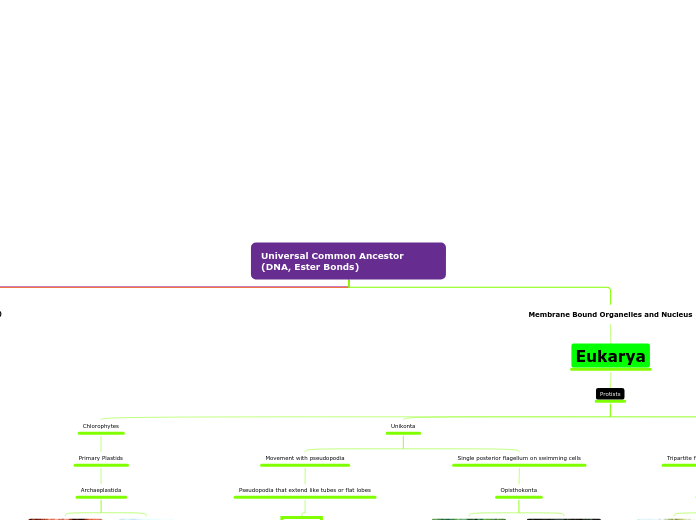Universal Common Ancestor (DNA, Ester Bonds)
Membrane Bound Organelles and Nucleus
Eukarya
Protists
Feeding Groove
Secondary Plastids
Excavata
Euglenoids
SAR Clade
movement with pseudopodia
Filose Pseudopodia
Rhizaria
Radiolarians
foraminifera
Secondary or Tertiary Plastids
Membranous Vesicles on the cell membrane
Alveolata
dinoflagellate
Tripartite flagellar hair (Stramenopila)
Stramenopila
Diatoms
Giant Kelp
Unikonta
Single posterior flagellum on swimming cells
Opisthokonta
Fly Agaric (Amanita muscaria)
American Black Bear
Movement with pseudopodia
Pseudopodia that extend like tubes or flat lobes
Amebozoa
Pseudopodia that extend like tubes or flat lobes
Black Bread Mold (>Rhizopus stolonifer)
Slime mold
Chlorophytes
Primary Plastids
Archaeplastida
Magnolia
Rhodophytes
Histones Present (Archae and Eukaryotes)
Ether Linkages
Archaea
Methanobrevibactor Smithii
Contains Peptidoglycan in cell wall
Bacteria
Escherichia coli









